- Home
- Tony Parsons
Valley of the White Gold Page 2
Valley of the White Gold Read online
Page 2
Later, as the sun disappeared behind the hills, brother and sister rode back to the homestead together with their dogs running behind them. It had been a long but very rewarding day and neither Jim nor Beth would have wanted to be anywhere else but in the valley of the Half Moon.
Chapter Two
The Stafford family’s ownership of Mudgee land traced back to the early days of the district’s settlement. Mudgee – reputedly derived from the Wiradjuri Aboriginal term ‘Moothi’, meaning ‘nest in the hills’ – was the second town gazetted (Bathurst was the first) following the successful crossing in 1813 of the Great Dividing Range by Blaxland, Lawson and Wentworth. This crossing and the road that followed it opened up millions of acres of land for white settlement.
James Blackman was the first white man to enter the Mudgee district, in 1821. He was followed quickly by others. The great and the privileged, people such as Lieutenant William Lawson and William Cox, took up the best of the land. Later comers had to be content with what was left. And there was, by British standards, a great deal of country to grab. Some of it, hard flinty hills, was not first-class country, except to the land-starved people of England, Ireland and Scotland, where land had been owned by the aristocracy for a thousand years. The areas of land available, first-class or otherwise, represented wealth beyond their wildest dreams. To own hundreds, even thousands, of acres justified all the hardships that the early settlers had endured to reach the new colony that became Australia.
William Cox was one of the most notable of these early settlers in the Mudgee district. He built the first road over the Blue Mountains in 1815 and received a land grant in recognition of his achievement. Cox was not a great sheep breeder in his own right, more an accumulator of country. In association with William Lawson, Cox became one of the district’s foundation settlers, and these two men owned some of the best flat land adjacent to the Cudgegong River. William Cox’s sons founded the great dynasty of fine-wool producers that persists to this day. Sheep bred by the Cox family were the foundation of many of Australia’s best fine-wool studs.
William Lawson also contributed to the birth of fine-wool production, though it was the Lawson manager, N.P. Bayley, who really founded the Havilah stud that produced the quality superfine wool that added lustre to Mudgee’s reputation as a premier wool-producing district.
But Mudgee was not born solely on goodness and grants. There were dark doings in the 1820s. The district was home to the Wiradjuri people, and as settlement escalated, conflict increased. Kangaroos and possums, major food sources for the Wiradjuri, were slaughtered in great numbers. Sacred sites were desecrated and prime riverside land came under white control. When the Wiradjuri retaliated, martial law was declared and armed settlers roamed the countryside, murdering Aborigines on sight. By 1840 the Wiradjuri had virtually ceased to exist, certainly as a tribe. It was said that the last Aborigine died in 1876.
The early settlers then concentrated on building up their flocks and were so successful that Mudgee wool became known wherever wool was processed. Along with Tasmanian wool, it was regarded as the ultimate in quality. Until the Peppin brothers bred the Peppin merino, it was considered almost a heresy to consider using any other strain of sheep.
The next stage in Mudgee’s development occurred in the 1850s when gold was discovered in several places. There was the Big Nugget that was unearthed in July 1851 only twenty-three miles from Mudgee. The total weight exceeded a hundredweight of gold.
Gold fever gripped Australia and people came from all over the world to seek their fortunes at Mudgee, Bathurst and Gulgong, and at the rich Victorian goldfields of Ballarat and Bendigo. Mudgee’s population apparently exceeded twenty thousand people at that time. New townships were born literally overnight. Places such as Hill End, Meroo, Windeyer and Hargraves were all alive with gold seekers and those who lived off them.
In truth, the golden days were a transitory phase of Mudgee’s history, a giant hiccup if you like, and when the great strikes had dwindled away, the pioneer families who had settled on the land carried on just as they had done before gold fever hit the area. A by-product of the golden days was that the mix of adventurous gold seekers, entrepreneurs, ex-convicts and free settlers created a hardy strain of people who were able to cope with Australia’s vastness and extremes of climate.
Like those who produce superfine wool today, the woolgrowers of the goldrush days took little interest in the gold seekers who came with their pans and picks and shovels. Their interest lay in what is sometimes referred to as Mudgee’s ‘white gold’. It is this ‘white gold’, the fine wool that grows on their Saxon strain sheep, that continues to passionately interest their descendants today, and they take little notice of the tourists who continue to come with their pans and new-fangled detectors. (It is quite possible that there is more gold still beneath the ground than was ever dug up during the golden era of the 1850s.)
Mudgee wool has been pronounced by experts as virtually perfect. It is no small thing to produce the very best wool in the entire world, and Dan Stafford, like all fine-wool growers in the valley of the Half Moon, took the business very seriously.
Sheep raising wasn’t without its share of problems. Quite apart from the blowfly there were worms, lice, itch mite and, in the higher country, ticks, as well as numerous other complaints that could affect sheep – and that didn’t include politicians, who were blamed for most things. You could treat for the complaints but the politicians were more difficult to remove. Most of the woolgrowers of the Half Moon voted Country Party (now the National Party) on the basis that it was the only party of any earthly use to country people, but they did not have a high opinion of politicians generally. Politicians tended to promise the world before an election but failed to deliver afterwards. Whether he was right or wrong in his policies, ‘Black Jack’ McEwan had attracted some support because he was regarded as strong enough to stand up to Bob Menzies. Over the years the people of the district had been represented by some notable pollies including the redoubtable Sir Henry Parkes. The two men they admired most in the whole country were Sir Donald Bradman – not simply because of his batting records but because he behaved as a man should – and Sir Walter Merriman, who had revolutionised the breeding of fine-wool sheep.
When a man drove or rode through the front gate of his property, he entered his own principality in which he could do virtually as he liked. He was emperor of a ‘kingdom’ of several hundreds or perhaps thousands of acres. In the normal course of events he would only be separated from his property by his bank or by his death. The latter was an eventual certainty while the iniquitous death duties (politicians again) meant that many properties were perpetually in hock to the banks and/or wool firms. Death duties and bad seasons clobbered many landowners and forced them off their properties. Those who remained were necessarily skilled and determined, often to the point of obsession.
Although not physically intimidating, Dan Stafford was very much a valley man with a valley outlook, and he was never backward in speaking his mind. As a descendant of one of the original families who came to the area when it was first opened up, and from a line that had produced superlative wool for generations, Dan had a right to feel rather special. It was a virtually indisputable fact that no one produced better wool than he did. He might not receive the best wool price every year but he achieved it more often than anyone else and was the holder of several world-record prices for merino wool. He was quite capable of cutting a young fellow down to size very quickly.
It would be misleading to describe Dan as typical of the men of the Half Moon because they were all, each and every one of them, very different. What they did have in common was an obsession with fine wool. Even John Stevens and Hector McLeod, two valley men who did not grow superfine wool, were woolgrowers first and foremost. But Dan was a superfine fanatic. He also saw himself, as his father had done before him, as the head of his family – though he didn’t always get his own way. Despite what Bella thought, Dorothy
was no mouse and didn’t hesitate to speak her mind when she felt her husband went right over the top. He might have been even more difficult except that he’d served two years in the Second AIF where he’d been only a private until they made him a corporal. He had found that being the owner of a property didn’t matter a razoo in the army and that he had to do just as he was ordered to, and do it damned quick, too. Unlike John Stevens and Hector McLeod, who had been officers, Dan opted to remain a corporal because he didn’t like ordering men about.
Both John and Hector had been in the Light Horse in the 1930s but Dan’s father, Douglas, kept his son’s nose to the grindstone fairly well so Dan didn’t know much about the army when he joined up. Dan didn’t worry too much about the war when only the Germans and Italians were involved because it was all too far away and didn’t seem to concern Australia, but when the Japanese bombed Pearl Harbor and Darwin and took over Malaya, things took on a whole new perspective. He didn’t have to join up, but in his first great act of defiance against his father, that is just what he did. He left his father to look after Mattai and went off to war. The experience shocked him, but probably made him a better man. Dan had had a narrow range of experiences until he joined the army. Except for attending a few local dances, he was very inexperienced with women. The army certainly broadened his outlook on life, but after his father died and he took over ownership of Mattai, he was still a hard man to please. And no one knew this better than his daughters.
Prevented by her father from pursuing her natural gift with horses at a competitive level, Bella Stafford had turned to her other great interest – dressmaking. She took over a section of the homestead’s big verandah, had it enclosed, and this became her workroom. When Dan muttered darkly about the size of the power bill, Dorothy told him that he couldn’t have it both ways. ‘If you won’t let Bella develop her riding talents and want her at home, you’ll have to put up with a bigger bill. You can’t expect a bright young woman like Bella to sit about and twiddle her thumbs.’
So Bella sewed. She made clothes for herself and for Beth and her mother. And she made clothes for lots of other women, too. She was clever at choosing colours and styles to suit even generous figures and their owners were thrilled to be complemented so well – soft, flattering styles, a lot of them using fine-wool fabrics that draped beautifully. Her skilfulness brought her orders and she made outfits for the wives of some of the district’s leading lights. Before very long, she had quite a good little business that brought a lot of visitors to Mattai.
Of course, Bella did more than design and make clothes. There were plenty of times when she was needed to help out on the property. She and Beth took turns milking cows and making butter. Both girls helped Jim with mustering and general sheep work, and Bella was quite capable of sowing oats for winter feed. Not that there was a lot of land suitable for cultivation, but Dan liked to have some oats for ewes to lamb on. Bella was especially keen on mustering the steeper country to bring in the wethers. All the Stafford children were because it involved some serious riding.
Bella also helped her mother in the house and both she and Beth were very competent in the kitchen. There was always someone to feed at Mattai, especially during the ram-selling season, so the larder had to be kept well filled with cakes and biscuits. And Bella was often to be found in the garden, tending her mother’s roses, while Beth looked after the vegies. The girls were certainly required to pull their weight on the property.
Like most young women, Bella had visions of one day making her own wedding dress and dresses for her bridesmaids and her mother, as well as a going-away outfit for herself. She’d always looked forward to the day when she would be mistress of her own house and have children to raise. She thought two would be nice. She and her mother were great mates but her father was a bit hard to take at times. She was over twenty-one now but her father’s attitude was that while she lived at Mattai he was the boss. While she sewed and designed clothes, Bella thought a lot about young men, or, more precisely, the young man who would be her young man. She thought of how great it would be to set up her own house, select the furniture and all the other bits and pieces that made a house a home. Then there would be the times when she and her husband worked together with stock. There would be mustering and drafting in the yards and maybe she’d have her initials with her husband’s on the wool bales. Her three horses would go with her. Ginger, too, because their neighbour, Matt Jackson, had left the red roan pony to her after he had tragically taken a fatal fall on one of his geldings. His property, Glen Avon, had been put up for sale and they would have new neighbours before very long. It was the first sale of a Half Moon property for a long time.
So Bella dreamed as she worked. It wasn’t as if she was desperate to be married, though it did rate very highly in her thinking. The problem was that eligible men were very thin on the ground in the district. And most of those she considered might be suitable had been pronounced as ‘no-goers’ by her father. Even Wes Saunders, who Beth thought wouldn’t have been a bad pick for her sister, had ‘no guts’ and was a ‘mummy’s boy’, according to Dan.
Beth, however, didn’t seem at all concerned about young men. She was oblivious to the havoc her mere presence created in the district. ‘The right guy will turn up one of these days, Bella,’ she said breezily. Beth didn’t have a care in the world. She loved her woolclassing course and had her dogs for companions. What more did she need?
It was while Bella’s thoughts were most acutely tuned to marriage that Wally Osborne had made his appearance. He turned up in the valley to inspect Glen Avon, travelling from Sydney in a Dalgety vehicle. Stan Cullen, who did stock work for Dalgety’s and was looking after Glen Avon until it was sold, told Dan Stafford that he’d heard that Wally hailed from Tasmania.
Wally knew a lot about superfine merino wool. He also knew that no place in the world grew it better than the Mudgee district, particularly the valley of the Half Moon. Yet, at first glance, Wally had not been impressed with the country. It was much harder and drier-looking than he was used to and he had begun to imagine that he had wasted his time making the trip. He took a perfunctory interest in the Glen Avon homestead, which was large and in good order considering its late owner had been a bachelor. The outbuildings, which were numerous and functional, got only a quick appraisal before Wally headed, with a shade more interest, to the shearing shed. It was a four-stand shed with plenty of bins and a large wool room. All very satisfactory.
Dalgety’s had asked their stockman to run in a mob of Glen Avon ewes as they had been told that Wally was a good wool man. Wally dived into the mob and one by one caught several ewes. He opened the wool and examined it. He found it was quite beautiful in style, fineness and colour, and he didn’t find a poor-quality fleece. This Half Moon country did not look a patch on the land he had in Tasmania but there was no doubt it could produce high-quality wool.
Wally sat on the top rail of the sheep yards and tried to imagine himself in residence. That was supposing he could purchase the property. He reckoned the sale of his Tasmanian property, Dromeda, would more than cover it, but wool was currently down in value and had produced a temporary slide in property prices.
Wally, Hugh McDermott, Dalgety’s property manager, and stock worker Stan Cullen got into the car and drove up the track to a small hill. From this vantage point there was a fair view of the surrounding countryside. Cullen pointed to several well-known wool-growing properties. ‘You can’t see it from here but behind that line of hills is Glengarry. That’s Hector McLeod’s place. Hector is the most knowledgeable grazier for miles around. His wool doesn’t bring the real top price but his sheep cut more than any of the other fine-wool places.’
‘Who owns that place down there?’ Wally asked, gesturing to the nearest homestead, which was almost masked by trees.
‘That’s Mattai, Dan Stafford’s place. It’s a fine-wool stud and a pretty damn good one, too. Dan gets his eye on a ram, he’s hard to toss at an auction. Merryvi
lle blood, of course,’ Cullen said.
Wally nodded. He was still unsure about this being the right place for him. He wondered if New England would be a better option. Maybe carry a bit better than this hardlooking country. But would it grow as fine a wool?
Wally had almost decided to go to New England and have a nose around when, suddenly, something changed his mind. He was in the Dalgety’s car with the other men and heading down the road when he saw a mob of sheep being driven by a single rider on a tall chestnut gelding. McDermott stopped the car to allow the mob to pour through a gate into a paddock that backed on to a row of shady pine trees. The rider dismounted, closed the gate and, leading the gelding, walked across to the car. Wally saw that it wasn’t a stockman but a young woman. And what a woman! Her dark hair was pinned under her wide-brimmed hat and she had brown eyes that matched her lustrous hair. She was wearing tight jeans and a man’s shirt, which did nothing to hide her curvaceous figure.
‘G’day, Stan. How are things at Glen Avon?’ she asked, as the men got out of the car. She had a pleasant though uncultivated voice that suggested to Wally she may not have been educated at a private school.
‘That’s a handy dog,’ Wally said, pointing to the red-and-tan kelpie that was controlling the sheep. He had been temporarily stunned by the sight of this beautiful woman and, because he was a dog man of sorts, he had said the first thing that came into his head. ‘Are you Mrs Stafford?’

 Long Gone the Corroboree
Long Gone the Corroboree #taken
#taken The Family Way
The Family Way One For My Baby
One For My Baby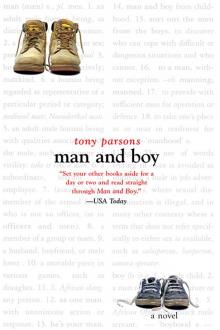 Man and Boy
Man and Boy The Murder Bag
The Murder Bag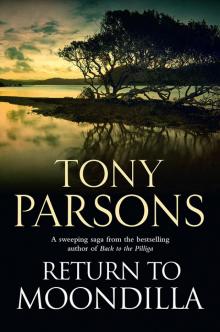 Return to Moondilla
Return to Moondilla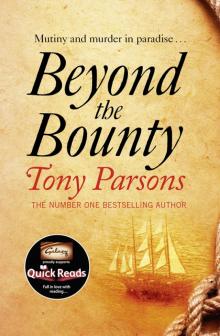 Beyond the Bounty
Beyond the Bounty Die Last
Die Last The Hanging Club (DC Max Wolfe)
The Hanging Club (DC Max Wolfe) Stories We Could Tell
Stories We Could Tell Return to the High Country
Return to the High Country Silver in the Sun
Silver in the Sun My Favourite Wife
My Favourite Wife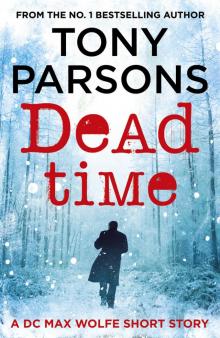 Dead Time
Dead Time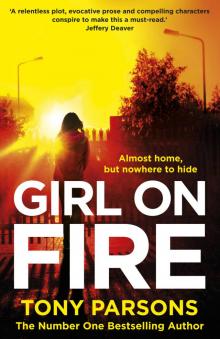 Girl On Fire
Girl On Fire Max Wolfe 02.5 - Fresh Blood
Max Wolfe 02.5 - Fresh Blood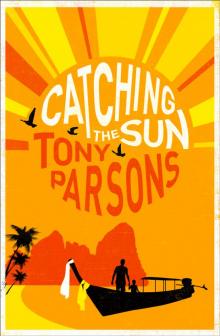 Catching the Sun
Catching the Sun The Slaughter Man
The Slaughter Man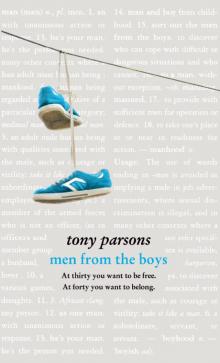 Men from the Boys
Men from the Boys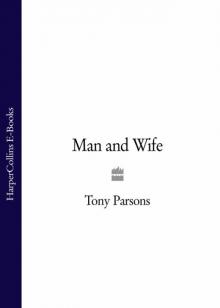 Man and Wife
Man and Wife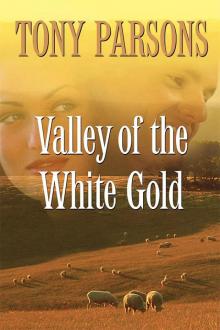 Valley of the White Gold
Valley of the White Gold Back to the Pilliga
Back to the Pilliga The Call of the High Country
The Call of the High Country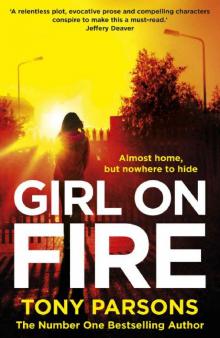 Girl On Fire_DC Max Wolfe
Girl On Fire_DC Max Wolfe